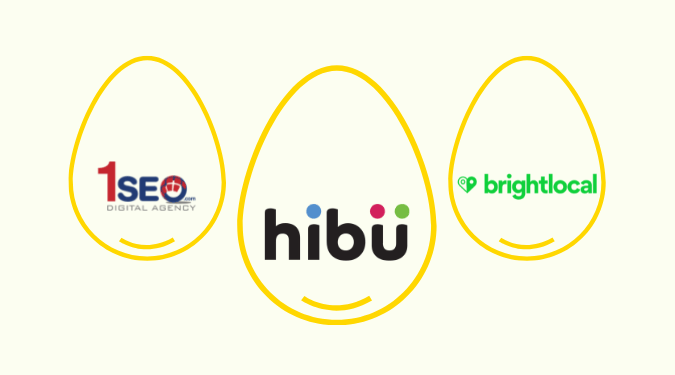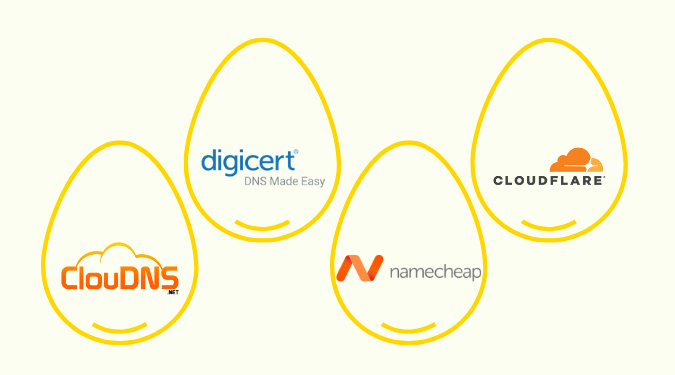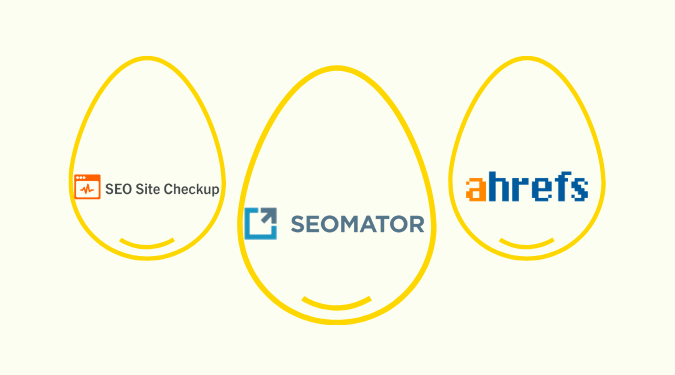Technology and Software
7 Easy Steps to Build a Company Website
Some businesses get started without websites. But for the vast majority of businesses, having a website is critical to success. Customers use websites to find information about products and services, check prices and reviews, and ultimately make purchasing decisions. A company website is also a key tool for building relationships with customers and generating leads.
The good news is that creating a website for your business doesn’t have to be complicated or expensive. With a little time and effort, and a great tool like Wix, you can build a professional website that will help you achieve your business goals.
In this post, we’ll give you seven steps to create a company website.
Crazy Egg’s Favorite Tools for Building a Company Website
At Crazy Egg, we’ve tried dozens of different website builders and narrowed it down to our three Golden Eggs—our favorites out of the whole bunch.
Wix is an excellent website builder for most. Its easy-to-use drag-and-drop interface makes it easy for even inexperienced users to pick from one of its 700+ templates and build a beautiful site. You can get started with hundreds of templates and unlimited pages today for free.
Squarespace is the best site builder for creatives. With its beautiful, visual-heavy designs, any creative business owner can highlight their best work or greatest accomplishments with ease. You can get started today with a free website trial.
Web.com offers straightforward services for people that need a website fast. Build a company website yourself with their easy website builder, or have Web.com’s professional designers help with the build. Start building today.

More Tools for Building a Company Website
These three companies are our favorites, but they aren’t for everyone. There are dozens of other website tools to check out, and we went in-depth on each of them to give you the best possible review we could. That way, you can decide for yourself which tools fit your needs best.
You can check out our full list of the best website builders here.
Step 1 – Choose a Domain Name
A domain name is the web address of your website, and it’s what customers type into their browsers to find your site. Your domain name should be easy to remember and reflect the name or branding of your business.
The criteria for your domain name are as follows:
- It should be short and easy to remember
- It should reflect your brand or business name
- It should not sound or be spelled similarly to other well-known brands
- You should avoid using hyphens, numbers, or special characters
Having a .com domain is ideal, but if that’s not available, plenty of new domain extensions can work for your business (e.g., .io, .co, .store, .shop). In some cases, these new domains can actually be better than .com because they can be more memorable when marketed correctly.
When buying a domain name, it will automatically check the availability for you. If it flags any potential issues, it will suggest alternative domain names. It’s best to go into this process with a few domain names in mind.

You can also use this free domain name search tool to find out if your desired domain name is available.
Step 2 – Choose a Web Hosting Service
Web hosting is the service that provides the technology and services needed to view your website on the internet. A web host stores your website’s files on its servers and makes them available to computers connected to the internet.
There are many different types of web hosting services, and to some extent, the type of hosting service you choose will depend on the size and needs of your website.
For most small business websites, shared hosting is a good option. Shared hosting means that your website shares server space with other websites. This is a more affordable option than other types of hosting, such as dedicated hosting, which is where your website has its own server.
There are also different types of shared hosting, such as WordPress and ecommerce hosting. If you’re planning to use your website for blogging or selling products, it’s important to choose a host that can accommodate those needs.
When choosing a web hosting service, there are a few things to keep in mind:
- The type of website you’re building
- The amount of traffic you expect to receive
- The features and tools you need
- The level of customer support you require
- Your budget
If your website traffic and required features are more than just the bare minimum, it is best to shell out a little bit more cash for a dedicated hosting service.
Step 3 – Decide Which Platform to Use
Your next step is to decide which platform you want to use to build your website. Platforms are essentially turnkey solutions that provide everything you need to create and manage a website.
There are many different web hosting services available, and it can be overwhelming to decide which one is right for you.
Depending on your needs, here are a few options:
- Wix: An easy-to-use website builder with drag-and-drop functionality and a ton of professional-looking templates to choose from. Wix is a great tool for many businesses.
- Carrd: A simple website builder perfect for businesses that just need a basic website. For a single landing page website, you can use Carrd for free.
- Webflow: A powerful no-code website builder ideal for businesses that need a more complex website without the hassle of coding.
- WordPress: A popular content management system (CMS) that can be used to create everything from simple websites to complex ecommerce platforms. It’s best for businesses that plan to post lots of content.
- Shopify: An ecommerce platform designed specifically for online stores. If you’re planning to sell products or services online, Shopify is the perfect solution.
Step 4 – Write Your Website Copy
You’re reading this blog, aren’t you? Then you know the importance of well-written copy! When it comes to your website, the same rule applies.
Great website copy is:
- Convincing: It should persuade your visitors to take action.
- Clear: It should be easy to understand.
- Focused: It should be relevant to your target audience.
- Interesting: It should hold your readers’ attention.
There are dozens of different copywriting techniques you could use, but the most important thing is to focus on writing for your audience.
Think about what they want to know, and answer their questions in a clear and concise way. If you’re not sure where to start, take a look at this list of copywriting tips for more inspiration.
Step 5 – Design Your Website
Designing your website can be a fun but challenging process—especially if you’re unfamiliar with web design. You have four different options when designing your website:
- Designing Your Own Website: You can use one of the free templates from one of the top website builders. Or, if you’re familiar with web design, you can design your own website using Figma.
- Purchasing a Template: If you don’t want to design your website from scratch, you can purchase a pre-made template. Some cost as low as $50, while others cost upwards of $1,000. You can find excellent templates for sale on Dribbble.
- Hiring a Designer: If you’re not familiar with web design or don’t have the time to design your own website, you can hire a professional designer to create a custom website for you. You can find one on a freelancer marketplace.
- Hiring an Agency: If you have the budget, hiring an agency means that you’ll have a team of designers and developers working on your website. This option is best for businesses that need a complex website built from scratch.
Regardless of which route you choose, there are a few steps involved in the design process.
Defining Your Brand
The first step in designing your website is to define your brand. This includes things like your company values, target audience, and overall aesthetic.
Your website should reflect your brand and help you connect with your target audience. For example, if you’re targeting millennials, you’ll want to use bright colors and a modern design.
Creating a Mockup
The next step is to create a mockup of your website. This is essentially a blueprint that will help you bring your vision to life.
You can use a tool like Figma to design your mockup or you can hire a professional designer to do it for you.
If you’re designing your own website, you’ll want to keep your mockup simple. Start with the basics—a home page, an about page, a contact page, and a blog—and add more pages as needed.
If you’re hiring someone to design your website, be sure to give them a clear idea of what you want.
Wireframing and Prototyping
Once you have your mockup, it’s time to start wireframing and prototyping your website.

Wireframing is the process of creating a basic outline of your website. This includes things like the layout, navigation, and content hierarchy.
Prototyping is the process of adding interactivity to your wireframe. This means adding things like buttons, links, and forms.
You can use a tool like Figma to wireframe and prototype your website or you can hire a professional to do it for you.
User Testing
User testing involves researching and testing your website with real users. This helps you identify any issues with your design and make sure that your website is user-friendly. There are several different ways to conduct user research, including surveys, interviews, and usability tests.

This is also the phase where you will A/B test different elements of your website to see what works best. For example, you might test different headlines or button colors to see which converts better. To do this, you can use our A/B testing tool to create and run your tests.
Based on your results from user testing, you may need to make some changes to your design. Once your user experience is polished, you’re ready to launch your website!
Website Launch
If you’ve followed all of these steps, you’re ready to launch the site you’ve created. This doesn’t mean that your user research is complete, though. Be sure to continue testing your website and making changes as needed.

The Crazy Egg heatmap tool can help you see how users interact with your website and identify areas for improvement. You should also consider setting up Google Analytics to track your website’s traffic and performance.
Step 6 – Add Content to Your Site
At Crazy Egg, we sell software that helps website owners improve their user experience. So how did we get you onto our site in the first place?
Because we had valuable information that you were looking for!
When creating content for your business, it’s essential to provide value to your target audience. This can come in the form of:
- Blog Posts: Long-form content that covers a specific topic in depth
- Infographics: Graphic images that contain valuable information that helps your audience understand a complex topic
- Video: A visual format that can be used to explain a concept or show how your product works
- Whitepapers: In-depth reports that provide valuable data and insights that are unavailable elsewhere
- E-Books: Similar to a whitepaper, but usually longer and more focused on one specific topic
To figure out what valuable content your audience is interested in, you can use keyword research tools like Google’s Keyword Planner and Ubersuggest. You can also use Google Trends to see what topics are currently trending if your product or service is time-sensitive.
The topics that you use for your content should be closely related to the products or services that you offer. For example, if you sell a product that helps people improve their memory, your blog posts could cover topics like:
- X Natural Ways to Boost Brain Power
- X Best (competitor) Alternatives for Improving Memory
- X The Worst Foods for Your Memory (and What to Eat Instead)
To ensure that your content is valuable, it’s important to do your research and cite any sources that you use. You should also avoid plagiarism at all costs, as this can get you penalized by Google.
Step 7 – Optimize Your Website for SEO
Search Engine Optimization (SEO) is the process of improving the ranking of your website on search engines, and it is extremely beneficial for your business. When potential customers search for products or services similar to yours, you want your website to show up as one of the top results.
There are many things you can do to optimize your site for SEO.
Perform a Technical Audit and Fix Any Issues
The first step is to perform a technical audit of your website. This will help you identify any issues that could be holding back your SEO ranking, such as broken links or duplicate content. You can use a tool like Screaming Frog to crawl your website and find any technical issues.
Once you’ve identified the issues, you need to fix them. This can be a time-consuming process, but it’s essential for improving your SEO ranking.
Research Keywords and Use Them Throughout Your Site
Not every website will be keyword-focused (and in some cases, it can make your page seem robotic), but if you are, research the keywords you want to target and use them throughout your site.
Here are a few basic tips for making your site keyword-optimized:
Figure out which keywords are central to your business and make sure they’re included in your website copy
- Use keyword-rich titles and descriptions for your blog posts and web pages
- Include keywords in your image tags and alt text
- Link to other pages on your site using keywords as the anchor text
- Avoid keyword stuffing, which is the practice of cramming as many keywords into your site as possible to game Google’s algorithms
Generate Backlinks to Your Site
Backlink building is the process of getting other websites to link back to your site. This is beneficial because it helps improve your SEO ranking and can also drive traffic to your website.
There are a few different ways to generate backlinks:
- Reach out to other businesses in your industry and ask for links
- Submit guest posts on other websites (and include a link back to your site)
- Submit your website to directories and listings
- Get active on social media and include links to your website
You could also hire an agency that specializes in link building, but it’s important to make sure they use white hat techniques, as black hat methods can result in Google penalizing your site.
Monitor Your Progress and Continue Making Improvements
After you’ve implemented all of these SEO tips, it’s time to monitor your progress. You can do this by using Google Analytics to track your website traffic and see how it’s changed over time. Look for any spikes or dips in traffic and try to determine what might have caused them.
You should also continue to research new SEO techniques and implement them as needed. As the algorithms used by search engines change, so does the best way to optimize your website for them.






